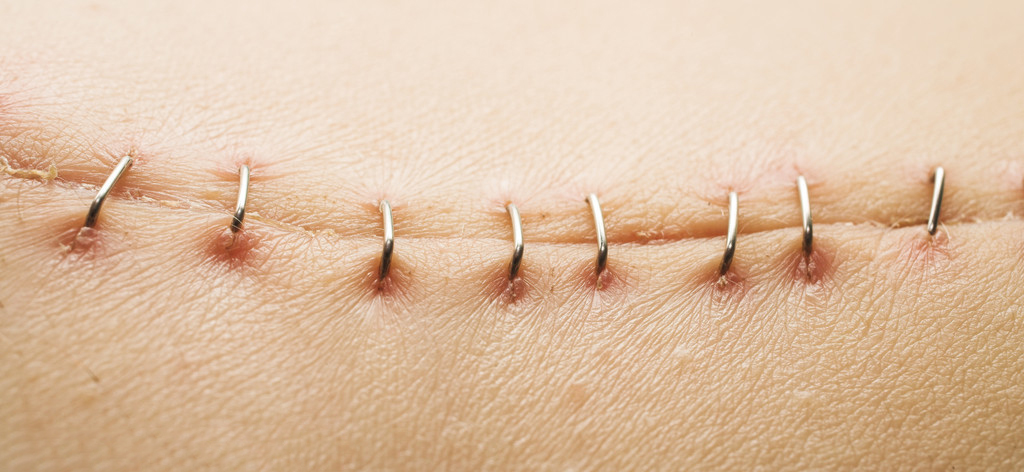
Classification and treatment of surgical scars
The formation of scars is part of the body's natural repair mechanisms and usually begins during accidental injuries, surgery, or skin repairs after wounds due to disease. The more severe the skin damage, the longer it takes to repair and the greater the chance of visible scarring.
The formation of scars is related to factors such as age, injured body parts, and heredity. Younger skin is more prone to hyperproliferation when the wound heals, and the scar area is usually larger and thicker. In general, scars appear to heal redness and bulge on the surface of the healing wound, which gradually fades and flattens over time.
The proliferation of scar tissue not only changes the appearance of the skin, but sometimes also causes some movement disorders.
Scars usually take 18 months or more to level out and the color fades slowly. On the downside, problematic scars may have the following effects: hyperplasia, growing up; color persists in red or black, does not fade; causes discomfort, itching or pain; limits joint activity; causes mental disorders due to appearance.
Scar classification and treatment:
1, superficial scars
Cause: A scar on the superficial skin, often caused by mild abrasions, superficial infections or shallow second degree burns.
Symptoms: These scars are slightly different from normal skin. They are partially flat and soft, and have no obstruction to the body. The scar is not obvious after a long time.
Treatment: generally do not need to be treated.
2, depressed scars
Causes: sores, surgery, trauma, infection, chickenpox and smallpox
Symptoms: The scar is sag, lower than the surrounding normal skin. If the scar only affects the superficial layer of the skin and subcutaneous tissue, the depression is shallow, and it only affects the appearance without dysfunction. If scars involve deep tissues such as muscles, tendons, and periosteum, the bases are tightly attached, often impeding functional activity. Pain can occur as soon as it adheres to nerve tissue.
Treatment: Smaller and shallower depressed scars can eliminate the scar epidermis and retain the deep tissue for filling. The subcutaneous tissue on both sides of the scar is fully separated and the wound edge is directly sutured, so that the depression disappears and the appearance is improved. . In the depressions with small denier and deeper densities, after the scar is removed, local fat flaps or muscle flaps are used according to the situation, or dermal, fat, fascia, cartilage or tissue substitutes are implanted, and the sides of the wound are subcutaneously After fully shallow separation, suture, so that the depression is smooth. For large and deep depressed scars, the wounds after resection of scars can not be directly sutured, and need to be repaired with flaps, muscle flaps or skin tubes, and repair of deep tissue defects at the same time or later to restore function and Exterior.
3, hypertrophic scars
Cause: Also known as hypertrophic scar, usually occurs in the deep second degree burn subcutaneous tissue without damage and self-healing, also seen in the third degree burn wound after the stamp skin graft healing after the skin gap, and the general incision after the edge of the suture On (as after heart surgery).
Symptoms: This scar is higher than the skin and irregular in shape. In the early stage, the local thickening and hardening, the capillaries are extremely congested, and it is flushed or dark purple, and the local itching is difficult. This phenomenon of memory proliferation gradually subsides after a considerable period of time, local congestion is improved, the tissue becomes soft, some can eventually calm down, the scar becomes shallow, the itching symptoms are also reduced and disappear, can be promoted, generally refractory contracture, Reduced dysfunction.
Treatment: elastic compression dressing is one of the more effective measures to prevent or reduce scar hyperplasia. For small areas of hypertrophic scars, local injection of adrenocortical hormone or local radiation therapy also has a certain effect. Surgical treatment is generally only suitable for dysfunction or improvement of the need for formation. The timing of surgery should generally be avoided during the acute hypertrophy and hyperemia stage of the scar, but in the functional parts such as the hand, it is necessary to consider appropriate advancement to avoid joint stiffness and secondary deformity. The principle of surgery is to accumulate scars at the beginning of the period, relieve contractures, and repair the wounds with skin grafts.



